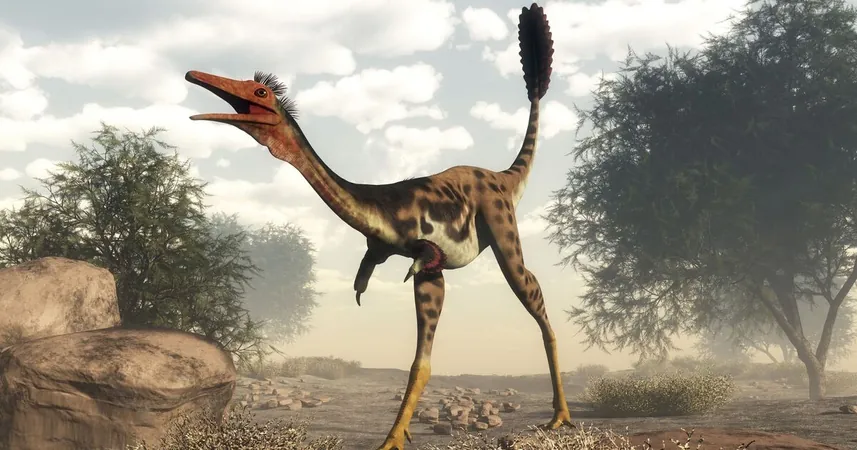
Groundbreaking Dinosaur Discovery: 70 Million-Year-Old Fossil with Air Pockets Found!
2025-04-09
Author: Yu
A Game-Changer in Dinosaur Research!
In a stunning revelation, scientists have stumbled upon the first-ever fossil featuring air pockets in a specific lineage of dinosaurs. This groundbreaking discovery pertains to the Alvarezsauridae family, a group of nimble, swift dinosaurs believed to have roamed the Earth around 70 million years ago.
Location, Location, Location!
Unveiled in the Allen Formation, a renowned fossil treasure trove in northern Patagonia, Argentina, this finding is the result of collaborative research among experts from Argentina, the US, and China. The findings, published in the prestigious journal 'PLOS One', enhance our understanding of the evolutionary journey leading to bird-like characteristics in these ancient reptiles.
Meet the Alvarezsauridae!
Alvarezsauridae were not your average dinosaurs. With their small stature and long legs, they were originally thought to be the earliest flightless birds. However, recent studies suggest they represent an early branch of maniraptoran theropods. Equipped with stout forelimbs and compact, avian-like hands, their impressive skeletal structure hints at powerful chest and arm muscles, likely adapted for digging or tearing apart their food.
What Did They Eat?
These fascinating creatures sported elongated, tube-like snouts filled with tiny teeth, suggesting a diet focused on insects like termites, much like today’s anteaters and aardvarks.
Air Pockets: A Vital Discovery!
Previously, air pockets were noted only in other dinosaur groups and flying reptiles, making this find particularly special. Modern birds are the only living animals with this unique trait, allowing them to remain light-weight, enhance breathing efficiency, and regulate body temperature. It’s believed that ancient dinosaurs may have developed similar adaptations for easier mobility and energy conservation.
The Marvels of Modern Science!
This discovery underscores the transformative role of CT scanning in paleontology. As air pockets and blood vessel pathways can be visually misleading, high-quality scans are essential for accurate differentiation. Astonishingly, the scans revealed tiny air spaces throughout the skeleton—even in parts of the tail—surprising the researchers, who hadn’t anticipated such an extensive finding.
More than One Dinosaur?
The fossils varied in size, indicating that they belonged to more than one individual dinosaur. The most complete specimen, charmingly named Bonapartenykus, now resides at the Carlos Ameghino Museum in Cipolletti City, Argentina. This exciting discovery suggests that air-filled bones may have been more common among dinosaurs than previously thought, revolutionizing our understanding of their biology!

 Brasil (PT)
Brasil (PT)
 Canada (EN)
Canada (EN)
 Chile (ES)
Chile (ES)
 Česko (CS)
Česko (CS)
 대한민국 (KO)
대한민국 (KO)
 España (ES)
España (ES)
 France (FR)
France (FR)
 Hong Kong (EN)
Hong Kong (EN)
 Italia (IT)
Italia (IT)
 日本 (JA)
日本 (JA)
 Magyarország (HU)
Magyarország (HU)
 Norge (NO)
Norge (NO)
 Polska (PL)
Polska (PL)
 Schweiz (DE)
Schweiz (DE)
 Singapore (EN)
Singapore (EN)
 Sverige (SV)
Sverige (SV)
 Suomi (FI)
Suomi (FI)
 Türkiye (TR)
Türkiye (TR)
 الإمارات العربية المتحدة (AR)
الإمارات العربية المتحدة (AR)